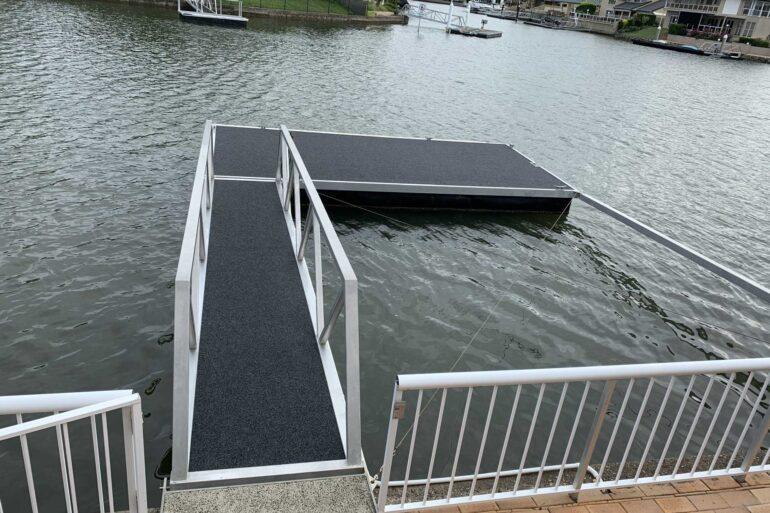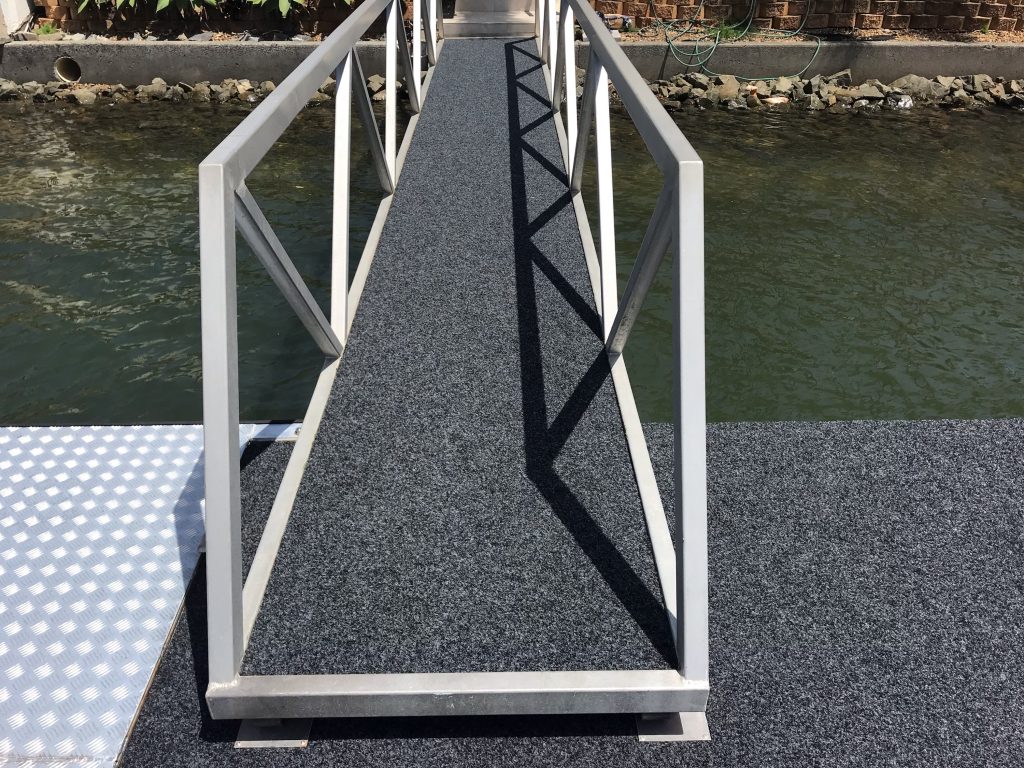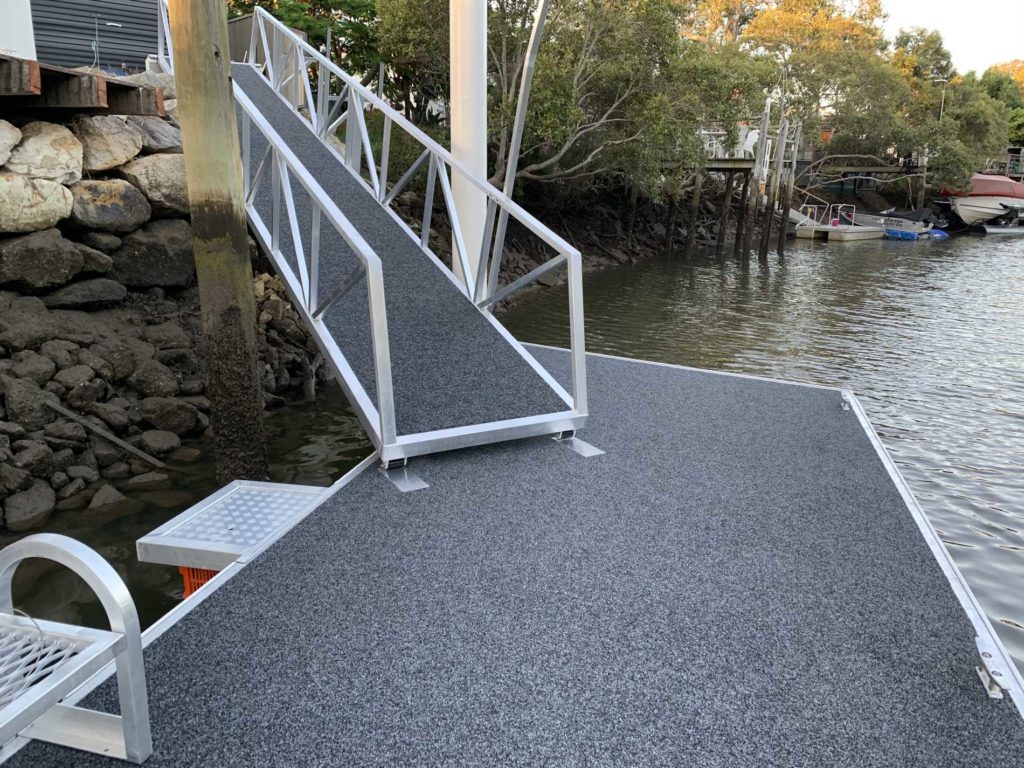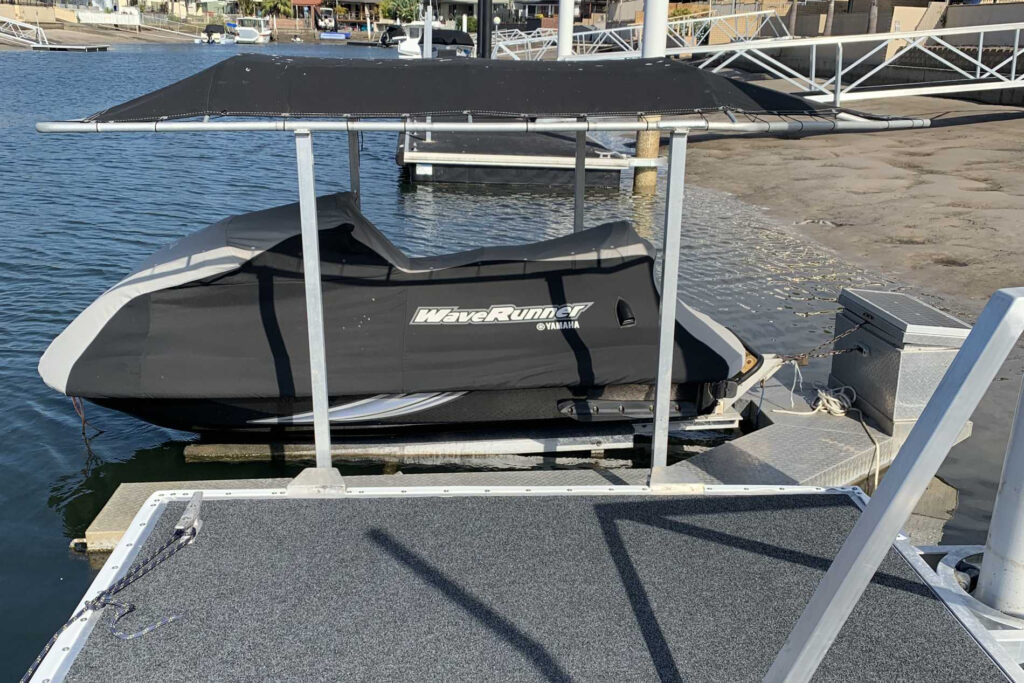
I bet you haven’t thought much about a pontoon dock’s design or shape. You may simply be interested in installing a pontoon dock on your waterfront home, and not what it looks like or its shape. However, the truth is, choosing the right design can go a long way in achieving optimal performance and functionality.
Pontoon docks are custom-made, which, in terms of design, means the sky’s the limit. However, this in itself can cause much uncertainty. So which shape is the best shape for your property and needs?
If you’re in the pontoon dock market, the shape is one of the most important considerations you’ll have to make. The shape of your pontoon dock will largely be dictated by the size and layout of your waterfront property. To help you make the best decision, we’ve put together a guide on pontoon dock shapes and design options.
Table of Contents
Pontoon Dock Shapes
Pontoon docks come in all shapes and sizes, but the shape of your pontoon dock is one of the most important considerations you’ll have to make. The shape of your pontoon dock will largely be dictated by the size and layout of your waterfront property. To help you make the best decision, we’ve put together a guide on pontoon dock shapes and design options.
L-shaped Pontoons
One popular pontoon dock design option is the L-shaped pontoon dock. As the name suggests, these docks are designed in the shape of an L, with one pontoon running parallel to the shoreline and another pontoon running perpendicular to it. This design provides increased stability and allows for more flexibility in terms of layout.
L-shaped pontoon docks are often used in residential settings because they provide a large amount of usable space. They are also common in marinas and other sheltered waterways and areas with strong currents, as the L-shape design helps deflect water flow. However, L-shaped pontoon docks are better suited for calm waters and gentle currents.
U-shaped Pontoons
Another popular pontoon dock design is the U-shaped pontoon dock. As the name suggests, these docks are designed in the shape of a U, with two pontoons running parallel to the shoreline and another pontoon running perpendicular to it.
U-shaped pontoon docks are often used in commercial settings because they provide a large amount of usable space for mooring boats. They work well in areas with high winds and waves. The u-shape allows the pontoon dock to deflect the wind and waves, providing a more stable platform. The u-shape also provides more surface area for the pontoon dock to grip the ground, preventing it from being pulled away by strong currents.
Y-shaped Pontoons
The Y-shaped pontoon dock is another popular design. As the name suggests, these docks are designed in the shape of a Y, with three pontoons running parallel to the shoreline and another pontoon running perpendicular to it.
Y-shaped pontoon docks are often used in commercial settings, providing a stable platform for loading and unloading large vessels. However, they can also be used in residential settings. They are also popular in recreation areas such as lakes and waterways, where they can be used for swimming, fishing, and boating.
L-shaped pontoons generally work well in calm water, while Y- and T-shaped pontoons are better suited for more active waterways.
T-shaped Pontoons
T-shape pontoon docks, also known as T-head docks, are a type of dock that protrudes from the shoreline at a 90-degree angle. The T-shape allows for more boat slips and easier access to the water. They are often used in marinas, boat clubs, and other waterfront developments.
While T-shaped docks are more expensive than traditional L-shaped docks, they offer several advantages. For instance, T-shape docks are less likely to catch wind and wave action, making them more stable and ideal for areas with high winds or large waves. In addition, T-shape docks provide easier access to the water for swimming, fishing, and other activities. As a result, T-shape docks are an excellent choice for those looking to maximise their waterfront property.
Finger Pontoons
Finger pontoons are a type of dock that is characterised by its straight, finger-like design. These docks are typically used in marinas and other similar applications where there is a need to maximise space utilisation. Finger pontoons offer several advantages over traditional dock designs. First, they allow for easier manoeuvrability when docking and un-docking boats. Second, they provide better protection from waves and other water movement, which can damage boats and cause wear and tear on docks. Finally, finger pontoons typically have a longer lifespan than other types of docks due to their robust design.
Pontoon Dock Design Options
There are a variety of pontoon dock shapes and sizes to choose from, each with its own advantages and disadvantages. Here we will take a look at the most common types of pontoons, as well as the different design options and finishings available.
Type of Pontoon Dock
When it comes to choosing a pontoon dock, there are a variety of factors to consider. You must first decide what type of pontoon dock best suits your needs. In terms of the types of pontoon docks available, the main three options are cable, strut, and piled pontoons. Each type has its own unique advantages and disadvantages.
Cable Pontoon Docks
Cable pontoon docks are the market’s most popular type of pontoon dock. They offer several advantages over their strut and piled counterparts. First, cable pontoons are more stable than strut pontoons. Second, they are cheaper to install than piled pontoons and can be used in deeper waters.
Strut Pontoon Docks
Strut pontoon docks are a type of pontoon dock that uses metal struts to support the pontoons. While they are not as stable as cable pontoons, they do offer several advantages. First, strut pontoons are easier to install than piled pontoons. Second, they are priced mid-range between cable pontoons and piled pontoons. Finally, strut pontoons are often the only suitable option for many waterfront homes.
Piled Pontoon Docks
Piled pontoon docks are the most permanent type of pontoon dock. They are installed by driving piles into the ground to support the pontoons. Piled pontoons offer many advantages over their cable and strut counterparts. First, they are the most stable type of pontoon dock. Second, they offer a higher weight capacity than either cable or strut pontoons. Finally, they are the most permanent type of pontoon dock, making them ideal for those who do not want to move their dock.
Pontoon Dock Design
Once you have decided on the type of pontoon dock, you need to decide on the design. There are a variety of designs to choose from, each with its own benefits and drawbacks. The most common designs are L-shape, U-shape, Y-shape, and T-shape pontoons (see above).
Gangway Options

Gangway leading to floating dock of a pontoon
One of the most important components of a pontoon dock is its gangway. A gangway is a walkway that connects the dock to the shore. There are a variety of gangway designs to choose from, each with its own advantages and disadvantages. Finishes include aluminium meshing, marine carpeting, and timber decking. For a durable finish, opt for aluminium meshing or marine carpet. Decking timber isn’t designed for the marine environment and will eventually need replacing.
Pontoon Dock Finishings

Finally, you need to decide on the finishings for your pontoon dock. Unlike gangways that offer various finishing options, the floating dock component of a pontoon is usually finished in a robust marine carpet. Marine carpet is easy to clean and designed for the marine environment. It also comes in various colours, so you do have some say over the finished look.
Pontoon Dock Accessories

You can also add accessories to your pontoon dock to customise it to your needs. Common accessories include fenders, jet ski docks, lights, and fish-cleaning stations. Fenders are used to protect your pontoon dock from bumps and scrapes. Jet ski docks are used to store jet skis when they are not in use. Lights can be used to illuminate your pontoon dock at night. Fish cleaning stations are a must for any fisherman who likes to clean their catch on the dock.
Of course, these are just a few options – with Micks Marine Maintenance and our welding and fabrication service; the sky’s the limit! So if you can think it, we can create it.
Conclusion
When it comes to choosing a pontoon dock, there are a variety of factors to consider. You must first decide on the type of pontoon dock, then the design, and finally, the finishings. You can also add accessories to customise your pontoon dock to your needs. With so many options available, you are sure to find a pontoon dock that best suits your needs.
For all your pontoon dock needs, turn to Micks Marine Maintenance. We are the experts in pontoon dock design, construction, maintenance and repairs, and we can help you create the perfect pontoon dock for your home. Contact us today to get started.